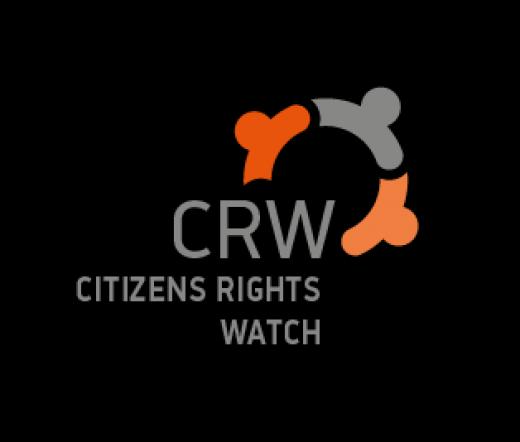On 2 of July, the United Nations Human Rights Council (UNHRC), during its 29th Session in Geneva, unanimously adopted its first substantive resolution against child, early and forced marriage, entitled Strengthening Efforts to Prevent and Eliminate Child, Early and Forced Marriage (A/HRC/29/L.15) (UNHRC, 2015).
Recognizing child, early and forced marriage as a violation of human rights and “a barrier to sustainable development [that contributes] to perpetuating the cycle of poverty”, the resolution aims to boost the global efforts for the prevention and elimination of this practice (A/HRC/29/L.15, pp. 2-3).
The resolution recognizes that the practice “prevents individuals from living their lives free from all forms of violence” affecting harmfully the victims’ “right to education, and the highest attainable standard of health, including sexual and reproductive health.” (A/HRC/29/L.15, p.3)
Most recent efforts for the elimination of this practice can be traced in 2013 and 2014. In 2013 the UNHRC’s resolution 24/23 was adopted with aim to give an end to the child, early and forced marriage “with a particular focus on challenges, achievements, best practices and implementation gaps”. During its 69th session, in 2014 the UN General Assembly (UNGA) adopted resolution 69/156 calling for the end of child, early and forced marriage.
Overview
According to the Convention on the Rights of the Child (CRC), a child is:
“Every human being below the age of eighteen years unless under the law applicable to the child, majority is attained earlier” (CRC, Art. 1)
UNICEF defines child marriage, as “a formal marriage or informal union before age 18”.
Even though “early marriage” is also related to marriages where both parties are 18 years old or older and are unready to give their consent due to other factors (e.g. psychological, emotional and others), “early and child marriages” are often used identically.
Forced marriage on the other hand could be generally described as the official union or legal contract between two parties that is conducted forcibly without one or both parties’ consent. Forced marriage is often correlated with domestic violence (inside the marriage) but also violence perpetrated to coerce an unwilling participant into marriage or to discipline a person for rejecting it.
There are significant differences on the definitions of “child, early and forced marriage”. However, forced marriage has been highly related to early marriage/child marriage. Based on the U.S. Department of State Foreign Affairs Manual (2012, p.1) the majority of forced marriage cases “involves young women and girls aged between 13 and 30 years old”.
Despite the fact that the definition of child marriage concerns both female and male children, the majority of the children who are getting married before their 18th birthday are girls. “For example, in Mali the girl: boy ratio of marriage before age 18 is 72:1; in Kenya, 21:1; and even in the United States, 8:1” notes Nour (2006).
Early, child and forced marriage is a harmful practice that has damaging consequences on a child’s personal autonomy and development, health, reproductive and educational rights.
UNICEF’s 2014 estimations suggest that even though some slight progress has been made and there is a decline to the number of child marriages compared to three decades ago, the number of women that got married before their 18th birthday still reaches 700 million women.
“More than one in three (about 250 million) entered into union before age 15.” (UNICEF, 2014)
Victims of child, early forced marriage are most vulnerable to domestic abuse and face great health risks (such as sexual transmitted diseases e.g. HIV, complications during pregnancy and childbirth that often lead to death and others).
Citizens’ Rights Watch (CRW) claims that child, early and forced marriage is a gross human rights violation and has to come to an end!
We welcome and support the UNHRC’s resolution for the end of this harmful practice!
We call for collective action, the strengthening of international cooperation among the states and the addressing of the root causes of child, early and forced marriage with aim its most effective prevention and elimination.
Sources
FCO & The Rt Hon Baroness Anelay of St Johns Baroness. Anelay welcomes conclusions of UN Human Rights Council. Press Release (3 July 2015). Available at: DBEhttps://www.gov.uk/government/news/baroness-anelay-welcomes-conclusions-of-un-human-rights-council—2
Nour N, (2006) “Health consequences of child marriage in Africa”, Emerg Infect Dis Vol. 12 No. 11
U.S. Department of State Foreign Affairs Manual. Forced Marriage of Minors Vol. 7, Consular Affairs 7 FAM 1740 (CT:CON-407; 06-29-2012) (Office of Origin: CA/OCS/L)
UNGA, Child, early and forced marriage: resolution / adopted by the General Assembly, 22 January 2015, A/RES/69/156, available at: http://www.un.org/en/ga/search/view_doc.asp?symbol=A/RES/69/156
UNHRC, Strengthening efforts to prevent and eliminate child, early and forced marriage, 1 July 2015, A/HRC/29/L.15
UNHRC, Preventing and eliminating child, early and forced marriage : Report of the Office of the United Nations High Commissioner for Human Rights, 2 April 2014, A/HRC/26/22, available at: http://www.refworld.org/docid/53999c1b4.html
UNHRC, Strengthening efforts to prevent and eliminate child, early and forced marriage : challenges, achievements, best practices and implementation gaps : resolution / adopted by the Human Rights Council , 9 October 2013, A/HRC/RES/24/23, Available at: http://www.refworld.org/docid/53bd11df4.html
United Nations Children’s Fund, Ending Child Marriage: Progress and prospects, UNICEF, New York, 2014, Available at: http://www.unicef.org/media/files/Child_Marriage_Report_7_17_LR..pdf
United Nations Population Fund (UNFPA), Marrying Too Young End Child Marriage, UNFPA,New York, 2012, Available at: http://www.unfpa.org/sites/default/files/pub-pdf/MarryingTooYoung.pdf


 Athanasia Zagorianou
Athanasia Zagorianou
Post a comment